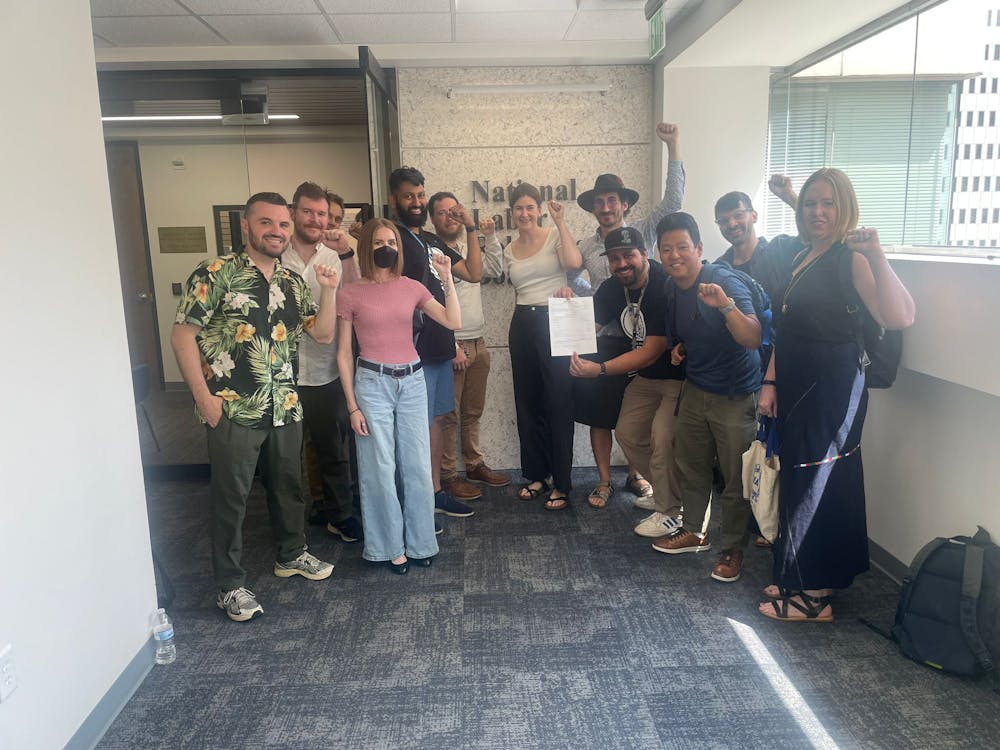Gary Zabow, a research fellow at the National Institutes of Health and a guest researcher at the National Institute of Standards and Technology, presented a talk on Thursday Sept. 8 as part of the Department of Mechanical Engineering’s (MechE) 2016 Fall Seminar Series.
The presentation, titled “Microengineering new NMR imaging and sensing probes,” gave an exposition of how nanofabrication, or fabrication at the nano-scale, can add the new dimension of color to traditionally black and white magnetic resonance imaging (MRI). This can significantly boosts the power of the contrast agents used in MRI and hence the quality of an MRI scan.
Yun Chen, an assistant professor, introduced Zabow and his work.
“Why is this talk exciting? It’s because it’s revolutionary. Before [Zabow] came up with this new probe, you could only see things in one color,” Chen said. “Generally if you look at an MRI it’s just grayscale, you cannot really have something like rainbow colors in different species. Powerful but limited information. [Zabow] came up with the deceivingly simple way to engineer MRI into the whole new realm of colorfulness. Of course it’s very, very integral in potential applications.”
Zabow expanded upon the implications of his work.
“Adding color to something gives you more information that you’ve ever had before. You’re not just color coding an image, you’re really getting more information out than would possibly occur otherwise,” Zabow said. “Having color labels have really revolutionized bioengineering. This whole industry is now making these things.”
Instead of relying on identifying and labeling colors by their frequency and electromagnetic spectrum, which is how the naked human eye operates, the technique uses radio frequency to identify color and contrast.
Microfabricated chips, or disks, that are made of magnetic metals like iron or nickel, sandwich a hydrogel that is responsive to the local environment. This set up is considerably small compared to the size and bulk of an MRI machine, which can weigh more than hundreds of pounds and take up a significant amount of space. The new technique is an example of extending nanotechnology to work at the macroscopic level.
“This is embarrassingly simple how we do this... anybody can make this. It’s easy to do. Why don’t people do this?” said Zabow. “I think this is just one example of where engineers have an obvious way of doing something, biologists have an obvious problem, but the two of them aren’t talking.”
One vital property of the sensor agents is that they have “multiplexing” capabilities, or that they can transmit more than one signal at a time, which provides more flexibility and depth with which details can be detected. Zabow said that this can help with earlier disease detection.
In addition to color, the hydrogels allow “quantifiable” measurements in response to changes in “tailored targets” that include temperature, pH, e-fields and bio-analytes. The sensors are small enough to be embedded in the hydrogel. It can then be injected into the body or into a material in a minimally invasive procedure.
Chen elaborated on the purpose of the MechE seminar series.
“We want to actually bring scholars from outside to our students. This is a MechE seminar to know what’s going on in the state of the arts,” she said. “[Students] probably know some part of it, but it’s kind of to forge interdisciplinary collaboration, to bring inspiration. People come here to listen to other scholars talking and it’s actually obligatory for graduate students.”
Chen hopes that attendance of the events will increase.
“Awareness is not high enough. I do mention it in my lab meeting if I invite a speaker,” Chen said. “I don’t know about other professors but I hope that they’re doing the same for their own speakers because this is really great.”
Students found the research interesting and applicable to their own work.
“This is actually a very basic, groundbreaking approach to a subject matter,” graduate student Amy Dagro, who is studying deformation mechanics in soft tissue, said “It’s definitely something that’s a growing field and is important for me to know.”
Graduate student Aaron Rips appreciated how the talk reached across different scientific disciplines.
“My field has nothing to do with what he was talking about but I could very quickly see the applications in the field that I study, fluid dynamics, and there are several obvious applications,” Rips said. “It’s interesting when the lectures span several topics.”




